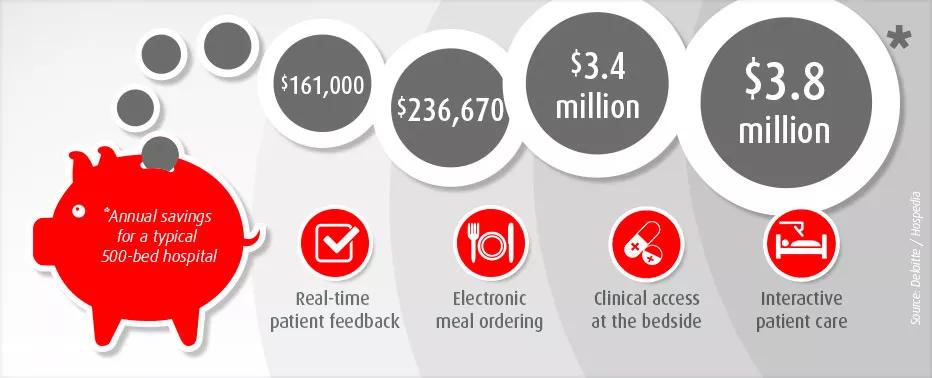Entering the generation of the empowered patient – part 2
医疗 · 2 分钟阅读
How does interactive patient care benefit patients?
The value of interactive care for patients goes beyond entertainment. The system allows patients to get more actively involved in their healthcare plan and grant them a greater say in their hospital experience. Interactive care at the bedside provides patients with access to relevant educational materials on their condition and treatment options. It further creates new opportunities for patients to interact with HCPs, with patients able to complete and submit surveys, meal orders and requests directly from the bedside.

There’s a growing awareness that the benefits of high patient satisfaction also translate into economic gains, making healthcare providers go the extra mile to cater to their patients’ needs.
What about the benefits for HCPs?
Bedside access to clinical information presents multiple benefits for HCPs. Interactive patient care provides HCPs with direct access to patient information right at the point of care. By allowing HCPs to access and update patient records in real time, processes are improved, communication between HCPs is enhanced, and greater efficiency is achieved. Interactive patient care is directing hospitals towards a more patient-centric workflow. Whether it is ordering meals online, or selecting entertainment electronically, interactive care ensures patient input is captured at every stage of the care delivery cycle. Feedback questionnaires can also be submitted from the bedside, providing HCPs with helpful insight on patient satisfaction ratings at the time of hospital admission.
In other words, capturing information electronically directly at the bedside dramatically reduces the burden of administrative and other non-clinical duties, translating into tangible benefits and, more importantly, allowing HCPs to focus on what they do best: providing care.
